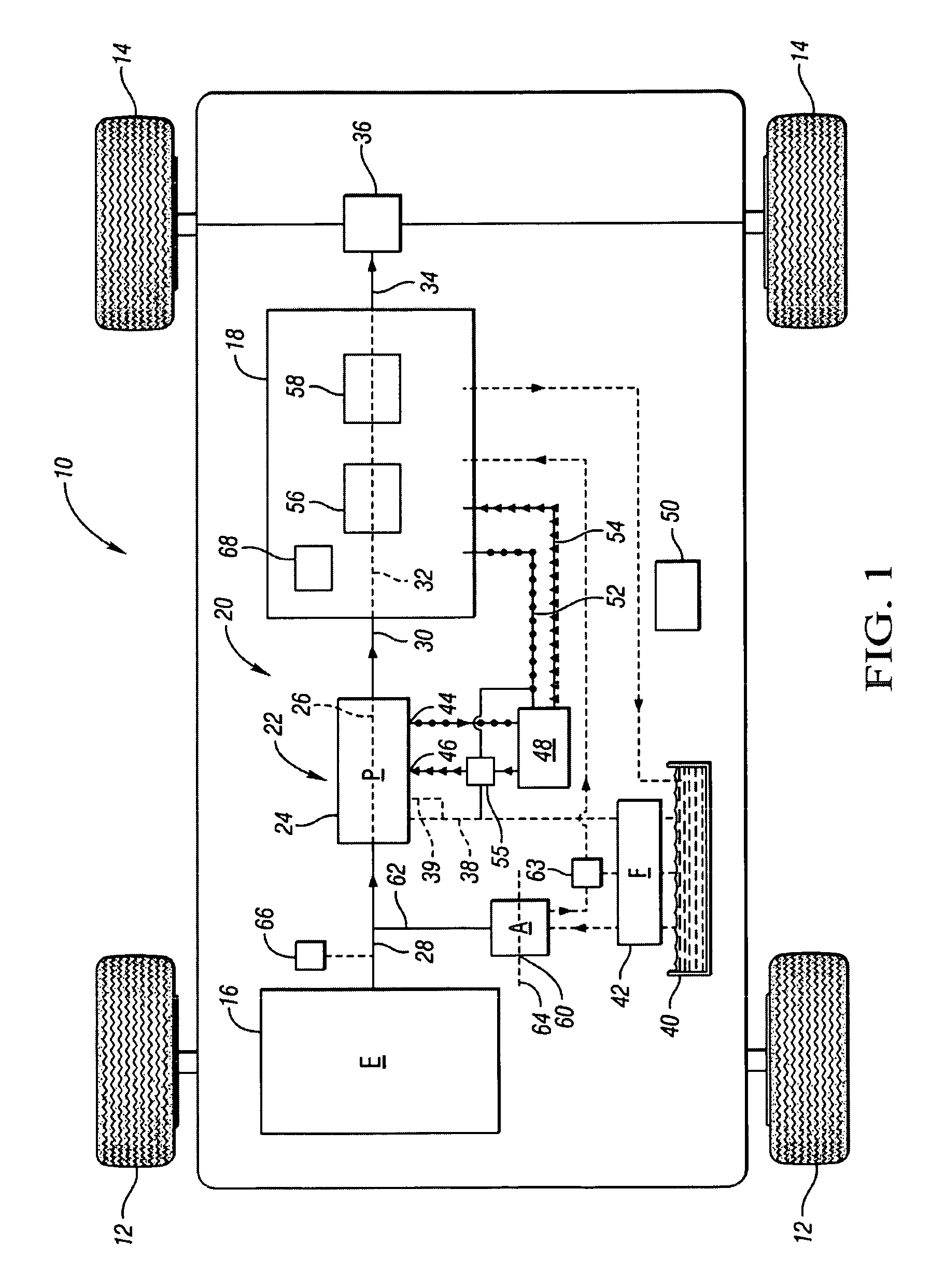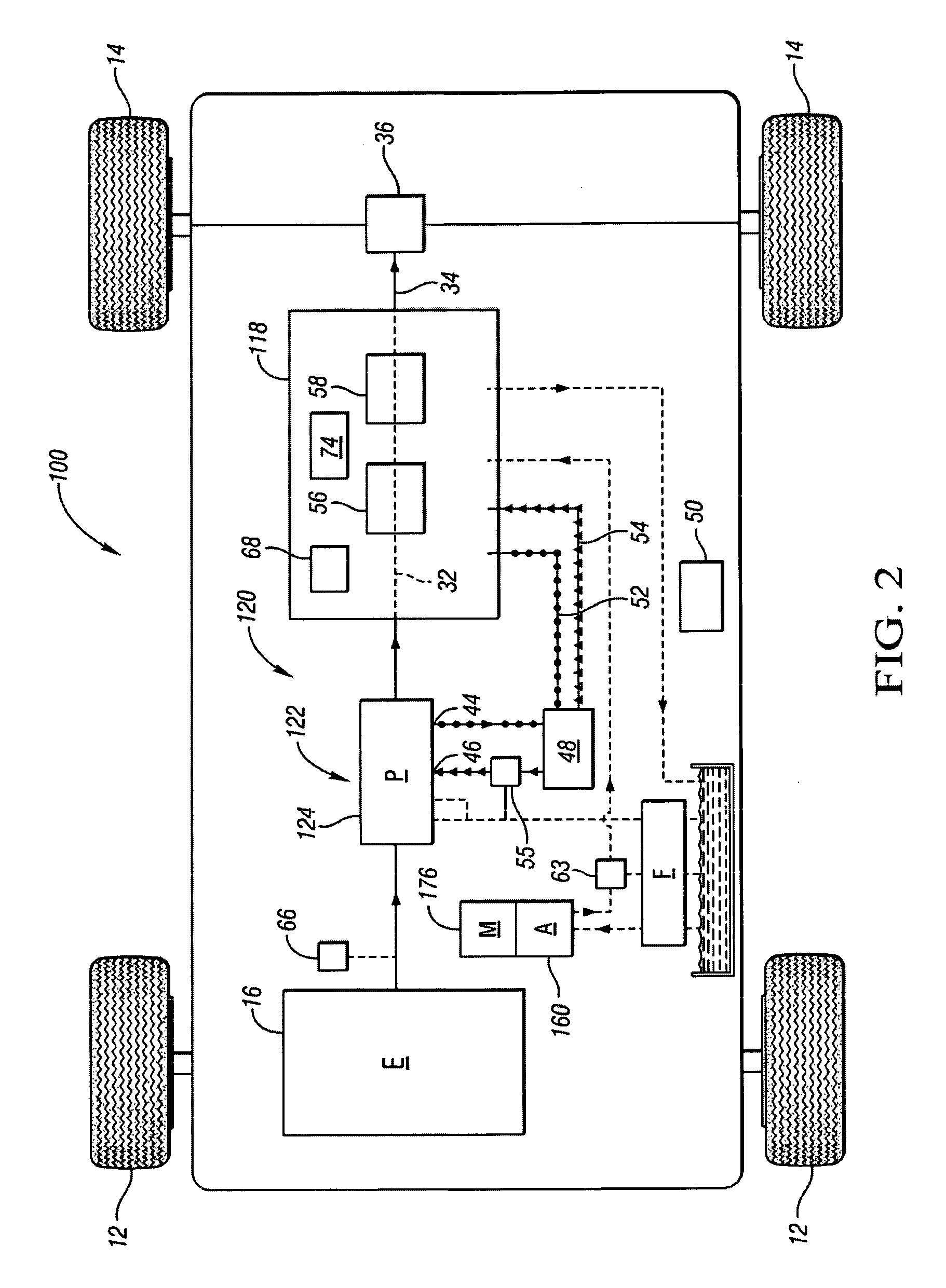On-demand hydraulic pump for a transmission and method of operation
a hydraulic pump and hydraulic transmission technology, applied in the direction of piston pumps, positive displacement liquid engines, fluid couplings, etc., can solve the problems of fuel economy penalty during the remainder of the duty cycle of the vehicle, operation of the transmission at idle speed of the engine, etc., to achieve less torque, less horsepower, and better fuel economy in the vehicle
- Summary
- Abstract
- Description
- Claims
- Application Information
AI Technical Summary
Benefits of technology
Problems solved by technology
Method used
Image
Examples
Embodiment Construction
[0022]Referring to the drawings, wherein like reference numbers refer to like components, FIG. 1 shows a vehicle 10 having front wheels 12 and rear wheels 14. The rear wheels 14 are powered by an engine 16 via a transmission 18 such that the vehicle 10 is a rear wheel-drive vehicle. While in this embodiment, the transmission is a rear wheel-drive transmission, in other embodiments the transmission may be a front wheel-drive transmission. The engine 16 and transmission 18 are part of a powertrain 20. The powertrain 20 may be non-hybrid (i.e., having the engine 16 as the only source of driving power) or hybrid (i.e., including an additional source of driving power, such as one or more electric motor / generators, a fuel cell, or any other known hybrid power source).
[0023]The powertrain 20 further includes a hydraulic system 22 used for providing hydraulic pressure to the transmission 18 for cooling, lubrication, and clutch actuation. The hydraulic system 22 includes an on-axis fixed dis...
PUM
 Login to View More
Login to View More Abstract
Description
Claims
Application Information
 Login to View More
Login to View More - R&D
- Intellectual Property
- Life Sciences
- Materials
- Tech Scout
- Unparalleled Data Quality
- Higher Quality Content
- 60% Fewer Hallucinations
Browse by: Latest US Patents, China's latest patents, Technical Efficacy Thesaurus, Application Domain, Technology Topic, Popular Technical Reports.
© 2025 PatSnap. All rights reserved.Legal|Privacy policy|Modern Slavery Act Transparency Statement|Sitemap|About US| Contact US: help@patsnap.com



